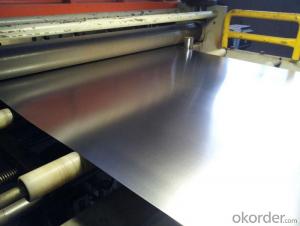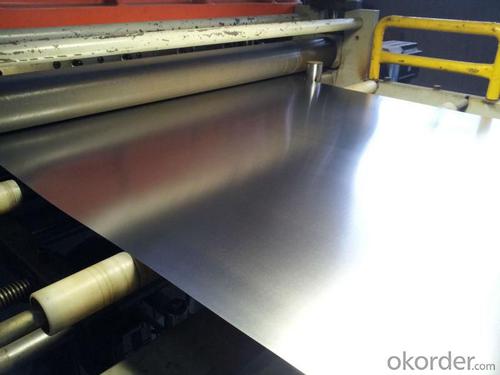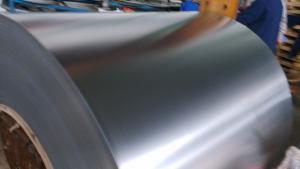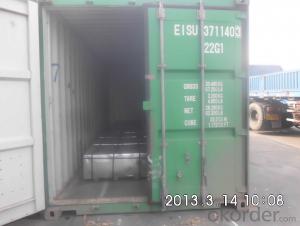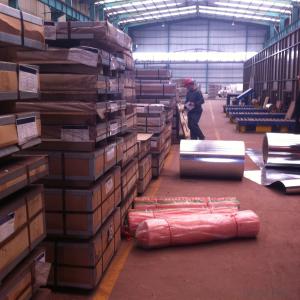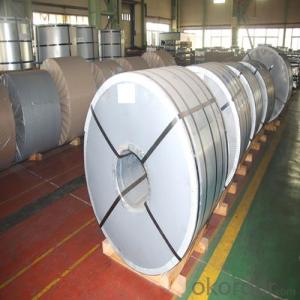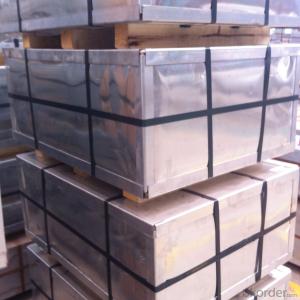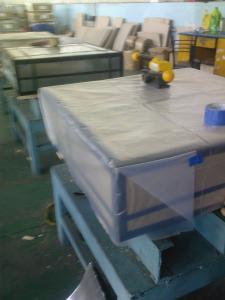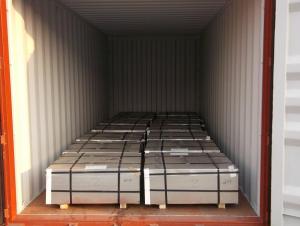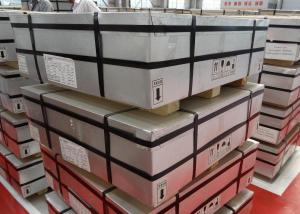TIN FREE STEEL(MR GRADE)
- Loading Port:
- China Main Port
- Payment Terms:
- TT OR LC
- Min Order Qty:
- -
- Supply Capability:
- -
OKorder Service Pledge
Quality Product, Order Online Tracking, Timely Delivery
OKorder Financial Service
Credit Rating, Credit Services, Credit Purchasing
You Might Also Like
Annual capacity: | 100 000 MT/ year |
Operated standard: | JIS G 3315 |
Base plate: | SPCC/MR |
Thickness : | 0.15mm~0.36mm |
Width: | 520mm~950mm |
Length: | 1018mm;828mm;coil;or per your request |
Coating | 80~120mg/m2 |
Temper : | T2.5,T3,T3.5,T4,T5,DR-8 |
Finish : | bright /matte/stone |
Packing: | plastic film, anti-rust paper,galvanized iron cover |
Loading : | 20f container with Max weight 25 Ton |
Shipping time: | 30~60 days after the receipt of buyer’s deposit |
Payment : | L/C or 30% TT in advance,70% against copy B/L |
MOQ: | 50 MT |
- Q: What are the main challenges in tinplate warehousing?
- The main challenges in tinplate warehousing include ensuring proper inventory management, maintaining product quality and integrity, optimizing space utilization, managing complex logistics, and adhering to stringent safety and regulatory requirements.
- Q: Is tinplate resistant to corrosion?
- Yes, tinplate is highly resistant to corrosion due to the protective layer of tin that is electroplated onto the surface of the steel.
- Q: How does tinplate packaging contribute to product protection against contamination?
- Tinplate packaging provides a protective barrier between the product and the external environment, preventing contamination from various sources such as moisture, oxygen, light, and microorganisms. The tin coating on the steel substrate acts as a corrosion-resistant layer, ensuring the integrity of the packaging and safeguarding the product from potential contaminants. Additionally, tinplate packaging can be hermetically sealed, further reducing the risk of contamination by creating a tight and secure enclosure for the product.
- Q: Can tinplate packaging be used for beverages?
- Yes, tinplate packaging can be used for beverages. Tinplate is commonly used for beverage cans as it provides a durable and protective barrier against moisture and oxygen, ensuring the quality and shelf life of the drink. Additionally, tinplate is recyclable, making it an environmentally friendly choice for packaging beverages.
- Q: What are the potential health risks associated with tinplate packaging?
- The potential health risks associated with tinplate packaging primarily stem from the potential migration of tin or other metals into the packaged food or beverage. If the tinplate packaging is not properly coated or if it comes into contact with acidic or salty substances, there is a possibility of metal leaching into the product. Prolonged exposure to high levels of certain metals, such as lead or cadmium, can have adverse effects on human health, including kidney damage, developmental issues, and increased risk of some cancers. However, it is important to note that strict regulations and quality control measures are in place to ensure the safety of tinplate packaging, and the risks can be minimized by using suitable coatings and proper manufacturing practices.
- Q: Can tinplate packaging be used for pet food products?
- Yes, tinplate packaging can be used for pet food products. Tinplate is a commonly used material for packaging due to its durability, resistance to corrosion, and ability to maintain the freshness and quality of food products. It provides a secure and protective barrier against external elements, making it suitable for pet food products as well.
- Q: What are the advantages of using tinplate for automotive components?
- There are several advantages of using tinplate for automotive components. Firstly, tinplate is highly corrosion resistant, which helps protect the components from rust and prolongs their lifespan. Additionally, tinplate provides excellent formability, allowing for complex shapes and designs to be easily manufactured. It also offers good strength and durability, ensuring the components can withstand harsh conditions and maintain their structural integrity. Furthermore, tinplate has good heat resistance properties, making it suitable for components that are exposed to high temperatures. Lastly, tinplate is a sustainable material as it is recyclable, contributing to environmental sustainability in the automotive industry.
- Q: What are the main technological advancements in tinplate production?
- The main technological advancements in tinplate production include the development of automated and high-speed production lines, the introduction of advanced coating techniques to enhance corrosion resistance, the implementation of precise control systems to ensure consistent quality, and the use of innovative materials and alloys to improve tinplate strength and durability. Additionally, advancements in recycling and sustainability practices have been made to reduce environmental impact in tinplate production.
- Q: How big is the difference between tinplate and stainless steel 316L?
- 316L is a kind of austenitic stainless steel with excellent corrosion resistance. The tinplate is not comparable. 316L is superior to tinplate in appearance, corrosion resistance, heat resistance and strength. Of course, the price is much higher than that of tinplate.
- Q: Does the tinplate have a tensile rate? Thank you heroes!
- Where Sn is the tin plating, tin tin iron is also called the iron horse known as tin plating English, abbreviated as SPTE, is a commercial pure tin plating of cold rolled low carbon steel sheet or strip. Tin plays a major role in preventing corrosion and rusting. It will be the steel strength and formability and corrosion resistance of tin soldering, and beautiful appearance with a material, corrosion resistant, non-toxic, high strength and good ductility properties.
Send your message to us
TIN FREE STEEL(MR GRADE)
- Loading Port:
- China Main Port
- Payment Terms:
- TT OR LC
- Min Order Qty:
- -
- Supply Capability:
- -
OKorder Service Pledge
Quality Product, Order Online Tracking, Timely Delivery
OKorder Financial Service
Credit Rating, Credit Services, Credit Purchasing
Similar products
Hot products
Hot Searches
Related keywords
